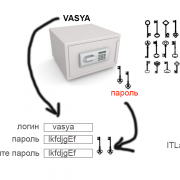Array.prototype.join()
Содержание:
- # Get Started
- # What is Splitting?
- Why you should develop your JavaScript Skills
- JavaScript arrays
- Что с олеофобным покрытием делают защитные стёкла
- How to use it:
- JS Уроки
- splice
- Замена содержимого строки
- JavaScript
- sort
- reduce/reduceRight
- The split method syntax
- # API
- Array.isArray
- Javascript string split()
- Массивы в JavaScript
- Split ( )
- concat
# Get Started
Start playing around with your own Splitting demo on CodePen with this template that includes all of the essentials!
Basic Usage
Splitting can be called without parameters, automatically splitting all elements with attributes by the default of which wraps the element’s text in s with relevant CSS vars.
Initial DOM
DOM Output
The aftermath may seem verbose, but this won’t be visible to the end user. They’ll still just see «ABC», but now you can style, animate and transition all of those characters individually!
Splitting will automatically add a class to the targetted element after it’s been run. Each will add their own classes to splits/parent as needed ( for , for , etc. ).
# What is Splitting?
Splitting is a JavaScript microlibrary with a collection of small designed to split (section off) an element in a variety of ways, such as , , , and !
The Splitting library does not handle any animation, but it gives you the elements and tools needed to create animations & transitions with JavaScript animation libraries or only CSS!. Most plugins utilize a series of s populated with CSS variables and data attributes that empower you to build all kinds of animations, transitions and interactions.
The general flow is:
- is called on a (see: )
- Create s to inject into , or query children of
- Index with CSS variables ( )
- Add the total to the target ( )
- Return an array of the splits (see: )
- Animate those elements with CSS or JavaScript!
Why you should develop your JavaScript Skills
Mobile app users downloaded an estimated 82 billion apps in 2013 and the number of downloads are expected to increase to over two hundred billion by the year 2017. This increase in demand for mobile apps means that there will be a drastic increase in demand for developers to develop these apps. A career as an app developer could be a career which offers huge opportunities for success in the future.
One of the new ways of building crossplatform mobile apps includes HTML5, CSS and JavaScript. A career as a JavaScript developer can be both financially rewarding and challenging.
To get a head start in programming with HTML, CSS and JavaScript, why not sign up for the HTML5 APIs For JavaScript – A Course For Web Developers course from Udemy?
JavaScript arrays
The JavaScript array is an object that allows you to store multiple values within a single array object. Arrays can contain more than one variable or value at a time. The size of the array is unlimited and new items can be added to an array or removed from the array. Arrays can contain a number of strings, a number of methods or even a number of arrays. Arrays that contain other arrays are called multidimensional arrays.
Arrays in JavaScript are created as follows:
var myArray1 = Array; var myArray2 = Array,,]; |
Elements within the array are separated by commas and each element in the array can be accessed by the element index that refers to that element. The index always starts at zero. So for example, to access the first element of myArray1, you need to access myArray1.
For a course on JavaScript arrays, strings, and other objects, why not sign up for a course in JavaScript for beginners and learn how to use the various objects that make up the JavaScript object oriented programming language. The course will teach you how to store variables and how to access those stored variables using JavaScript.
Что с олеофобным покрытием делают защитные стёкла
How to use it:
1. Insert the JavaScript file after jQuery library and we’re ready to go.
<script src="https://code.jquery.com/jquery-3.3.1.slim.min.js"
integrity="sha384-q8i/X+965DzO0rT7abK41JStQIAqVgRVzpbzo5smXKp4YfRvH+8abtTE1Pi6jizo"
crossorigin="anonymous">
</script>
<script src="split.js"></script>
2. The necessary CSS styles.
.arrow {
position: absolute;
right: 0;
bottom: 0;
width: 10px;
height: 10px;
cursor: ns-resize;
background-color: red;
}
.hj-transverse-split-div {
position: relative;
float: left;
height: 100%;
padding: 0px;
background: gray;
overflow: hidden;
}
.hj-wrap .hj-transverse-split-label {
position: absolute;
right: 0;
top: 0;
float: left;
width: 2px;
height: 100%;
display: block;
cursor: ew-resize;
background-color: #fff;
z-index: 9;
}
.hj-vertical-split-div {
position: relative;
border: 0px solid red;
width: 99.9%;
margin: 0 auto;
background-color: gray;
}
.hj-vertical-split-label {
position: absolute;
bottom: 0;
left: 0;
width: 100%;
height: 2px;
display: block;
cursor: ns-resize;
background-color: #fff;
z-index: 9;
}
3. Create a vertical split layout.
<div class='hj-wrap verticals'>
<div class="hj-vertical-split-div">Top
<label class="hj-vertical-split-label"></label>
</div>
<div class="hj-vertical-split-div">Middle
<label class="hj-vertical-split-label"></label>
</div>
<div class="hj-vertical-split-div">Bottom</div>
<div class="arrow"></div>
</div>
4. Create a horizontal split layout.
<div class='hj-wrap'>
<div class="hj-transverse-split-div">Column 1
<label class="hj-transverse-split-label"></label>
</div>
<div class="hj-transverse-split-div">Column 2
<label class="hj-transverse-split-label"></label>
</div>
<div class="hj-transverse-split-div">Column 3
<label class="hj-transverse-split-label"></label>
</div>
<div class="hj-transverse-split-div">Column 4
<label class="hj-transverse-split-label"></label>
</div>
<div class="hj-transverse-split-div">Column 5
</div>
<div class="arrow"></div>
</div>
5. Create a complex split layout containing horizontal panes and vertical panes.
<div class='hj-wrap'>
<div class="hj-transverse-split-div">Column
<label class="hj-transverse-split-label"></label>
</div>
<div class="hj-transverse-split-div verticals">
<div class="hj-vertical-split-div">Row
<label class="hj-vertical-split-label"></label>
</div>
<div class="hj-vertical-split-div">Row 2
<label class="hj-vertical-split-label"></label>
</div>
<div class="hj-vertical-split-div">Row 3</div>
</div>
<div class="arrow"></div>
</div>
- Prev: Get/Set/Keep The Ratio Aspect Of An Element — jQuery KeepRatio
- Next: Equal Height Layout With Support For Nested Elements — equalize.js
JS Уроки
JS HOMEJS IntroductionJS Where ToJS OutputJS StatementsJS SyntaxJS CommentsJS VariablesJS OperatorsJS ArithmeticJS AssignmentJS Data TypesJS FunctionsJS ObjectsJS ScopeJS EventsJS StringsJS String MethodsJS NumbersJS Number MethodsJS ArraysJS Array MethodsJS Array SortJS Array IterationJS DatesJS Date FormatsJS Date Get MethodsJS Date Set MethodsJS MathJS RandomJS BooleansJS ComparisonsJS ConditionsJS SwitchJS Loop ForJS Loop WhileJS BreakJS Type ConversionJS BitwiseJS RegExpJS ErrorsJS DebuggingJS HoistingJS Strict ModeJS this KeywordJS Style GuideJS Best PracticesJS MistakesJS PerformanceJS Reserved WordsJS VersionsJS Version ES5JS Version ES6JS JSON
splice
Метод splice() – это
универсальный «швейцарский нож» для работы с массивами. Умеет всё: добавлять,
удалять и заменять элементы. Его синтаксис такой:
Array.splice(index)
Он начинает с
позиции index, удаляет deleteCount элементов и
вставляет elem1, …, elemN на их место.
Возвращает массив из удалённых элементов. Этот метод проще всего понять,
рассмотрев примеры. Начнем с удаления. Предположим, имеется массив:
let ar = "Я", "смотрю", "этот", "обучающий", "урок";
Удалим 3-й и 4-й
элементы «этот» и «обучающий»:
ar.splice(2, 2);
мы здесь указали
индекс элемента, с которого происходит удаление и число удаляемых элементов.
Выведем результат в консоль:
console.log(ar);
Видим, в массиве
остались строки «я», «смотрю», «урок».
В следующем
примере мы удалим первые три элемента и добавим два других:
let delElem = ar.splice(, 3, "Это", "классный");
получаем массив ar:
«Это»,
«классный», «обучающий», «урок»
и массив delElem, состоящий из
удаленных элементов. Этот пример также показывает, что метод splice возвращает
массив из удаленных величин.
С помощью метода
splice можно вставлять
элементы, не удаляя существующие. Для этого аргумент deleteCount
устанавливается в 0:
ar.splice(3, , "интересный");
Получим массив:
«Я»,
«смотрю», «этот», «интересный», «обучающий»,
«урок»
В этом и в
других методах массива допускается использование отрицательного индекса. Он
позволяет начать отсчёт элементов с конца:
ar.splice(-3, 3, "это", "обучающее", "видео");
Здесь удаляются
последние 3 элемента и вместо них вставляются новые строчки.
Замена содержимого строки
Метод Replace () заменяет указанное значение другим значением в строке:
Пример
str = «Please visit Microsoft!»;
var n = str.replace(«Microsoft», «W3Schools»);
Метод Replace () не изменяет строку, в которой он вызывается. Возвращает новую строку.
По умолчанию функция Replace () заменяет только первое совпадение:
Пример
str = «Please visit Microsoft and Microsoft!»;
var n = str.replace(«Microsoft», «W3Schools»);
По умолчанию функция Replace () учитывает регистр. Написание Microsoft (с верхним регистром) не будет работать:
Пример
str = «Please visit Microsoft!»;
var n = str.replace(«MICROSOFT», «W3Schools»);
Чтобы заменить регистр без учета регистра, используйте регулярное выражение с пометкой » i » (нечувствительно):
Пример
str = «Please visit Microsoft!»;
var n = str.replace(/MICROSOFT/i, «W3Schools»);
Обратите внимание, что регулярные выражения записываются без кавычек. Чтобы заменить все совпадения, используйте регулярное выражение с флагом /g (глобальное совпадение):
Чтобы заменить все совпадения, используйте регулярное выражение с флагом /g (глобальное совпадение):
Пример
str = «Please visit Microsoft and Microsoft!»;
var n = str.replace(/Microsoft/g, «W3Schools»);
Вы узнаете намного больше о регулярных выражениях в главе регулярные выражения JavaScript.
JavaScript
JS Array
concat()
constructor
copyWithin()
entries()
every()
fill()
filter()
find()
findIndex()
forEach()
from()
includes()
indexOf()
isArray()
join()
keys()
length
lastIndexOf()
map()
pop()
prototype
push()
reduce()
reduceRight()
reverse()
shift()
slice()
some()
sort()
splice()
toString()
unshift()
valueOf()
JS Boolean
constructor
prototype
toString()
valueOf()
JS Classes
constructor()
extends
static
super
JS Date
constructor
getDate()
getDay()
getFullYear()
getHours()
getMilliseconds()
getMinutes()
getMonth()
getSeconds()
getTime()
getTimezoneOffset()
getUTCDate()
getUTCDay()
getUTCFullYear()
getUTCHours()
getUTCMilliseconds()
getUTCMinutes()
getUTCMonth()
getUTCSeconds()
now()
parse()
prototype
setDate()
setFullYear()
setHours()
setMilliseconds()
setMinutes()
setMonth()
setSeconds()
setTime()
setUTCDate()
setUTCFullYear()
setUTCHours()
setUTCMilliseconds()
setUTCMinutes()
setUTCMonth()
setUTCSeconds()
toDateString()
toISOString()
toJSON()
toLocaleDateString()
toLocaleTimeString()
toLocaleString()
toString()
toTimeString()
toUTCString()
UTC()
valueOf()
JS Error
name
message
JS Global
decodeURI()
decodeURIComponent()
encodeURI()
encodeURIComponent()
escape()
eval()
Infinity
isFinite()
isNaN()
NaN
Number()
parseFloat()
parseInt()
String()
undefined
unescape()
JS JSON
parse()
stringify()
JS Math
abs()
acos()
acosh()
asin()
asinh()
atan()
atan2()
atanh()
cbrt()
ceil()
clz32()
cos()
cosh()
E
exp()
expm1()
floor()
fround()
LN2
LN10
log()
log10()
log1p()
log2()
LOG2E
LOG10E
max()
min()
PI
pow()
random()
round()
sign()
sin()
sqrt()
SQRT1_2
SQRT2
tan()
tanh()
trunc()
JS Number
constructor
isFinite()
isInteger()
isNaN()
isSafeInteger()
MAX_VALUE
MIN_VALUE
NEGATIVE_INFINITY
NaN
POSITIVE_INFINITY
prototype
toExponential()
toFixed()
toLocaleString()
toPrecision()
toString()
valueOf()
JS OperatorsJS RegExp
constructor
compile()
exec()
g
global
i
ignoreCase
lastIndex
m
multiline
n+
n*
n?
n{X}
n{X,Y}
n{X,}
n$
^n
?=n
?!n
source
test()
toString()
(x|y)
.
\w
\W
\d
\D
\s
\S
\b
\B
\0
\n
\f
\r
\t
\v
\xxx
\xdd
\uxxxx
JS Statements
break
class
continue
debugger
do…while
for
for…in
for…of
function
if…else
return
switch
throw
try…catch
var
while
JS String
charAt()
charCodeAt()
concat()
constructor
endsWith()
fromCharCode()
includes()
indexOf()
lastIndexOf()
length
localeCompare()
match()
prototype
repeat()
replace()
search()
slice()
split()
startsWith()
substr()
substring()
toLocaleLowerCase()
toLocaleUpperCase()
toLowerCase()
toString()
toUpperCase()
trim()
valueOf()
sort
Данный метод
сортирует массив по тому критерию, который указывается в ее необязательной callback-функции:
ar.sort(function(a, b) {
if (a > b) return 1; // если первое значение больше второго
if (a == b) return 0; // если равны
if (a < b) return -1; // если первое значение меньше второго
})
Сортировка
выполняется непосредственно внутри массива ar, но функция
также и возвращает отсортированный массив, правда это возвращаемое значение,
обычно игнорируется. Например:
let dig = 4, 25, 2; dig.sort(); console.log( dig );
И получим
неожиданный результат: 2, 25, 4. Дело в том, что по умолчанию метод sort рассматривает
значения элементов массива как строки и сортирует их в лексикографическом
порядке. В результате, строка «2» < «4» и «25» < «4», отсюда и результат.
Для указания другого критерия сортировки, мы должны записать свою callback-функцию:
dig.sort(function(a, b) {
if(a > b) return 1;
else if(a < b) return -1;
else return ;
});
Теперь
сортировка с числами проходит так как нам нужно. Кстати, чтобы изменить
направление сортировки (с возрастания на убывание), достаточно поменять знаки
больше и меньше на противоположные. И второй момент: callback-функция не
обязательно должна возвращать именно 1 и -1, можно вернуть любое положительное,
если a>b и отрицательное
при a<b. В частности,
это позволяет переписать приведенный выше пример вот в такой краткой форме:
dig.sort( (a, b) => a-b );
По аналогии
можно формировать и более сложные алгоритмы сортировки самых разных типов данных:
строк, чисел, объектов, булевых переменных и так далее.
reduce/reduceRight
Метод «arr.reduce(callback)» используется для последовательной обработки каждого элемента массива с сохранением промежуточного результата.
Это один из самых сложных методов для работы с массивами. Но его стоит освоить, потому что временами с его помощью можно в несколько строк решить задачу, которая иначе потребовала бы в разы больше места и времени.
Метод используется для вычисления на основе массива какого-либо единого значения, иначе говорят «для свёртки массива». Чуть далее мы разберём пример для вычисления суммы.
Он применяет функцию по очереди к каждому элементу массива слева направо, сохраняя при этом промежуточный результат.
Аргументы функции :
- – последний результат вызова функции, он же «промежуточный результат».
- – текущий элемент массива, элементы перебираются по очереди слева-направо.
- – номер текущего элемента.
- – обрабатываемый массив.
Кроме , методу можно передать «начальное значение» – аргумент . Если он есть, то на первом вызове значение будет равно , а если у нет второго аргумента, то оно равно первому элементу массива, а перебор начинается со второго.
Проще всего понять работу метода на примере.
Например, в качестве «свёртки» мы хотим получить сумму всех элементов массива.
Вот решение в одну строку:
Разберём, что в нём происходит.
При первом запуске – исходное значение, с которого начинаются вычисления, равно нулю (второй аргумент ).
Сначала анонимная функция вызывается с этим начальным значением и первым элементом массива, результат запоминается и передаётся в следующий вызов, уже со вторым аргументом массива, затем новое значение участвует в вычислениях с третьим аргументом и так далее.
Поток вычислений получается такой
В виде таблицы где каждая строка – вызов функции на очередном элементе массива:
| результат | |||
|---|---|---|---|
| первый вызов | |||
| второй вызов | |||
| третий вызов | |||
| четвёртый вызов | |||
| пятый вызов |
Как видно, результат предыдущего вызова передаётся в первый аргумент следующего.
Кстати, полный набор аргументов функции для включает в себя , то есть номер текущего вызова и весь массив , но здесь в них нет нужды.
Посмотрим, что будет, если не указать в вызове :
Результат – точно такой же! Это потому, что при отсутствии в качестве первого значения берётся первый элемент массива, а перебор стартует со второго.
Таблица вычислений будет такая же, за вычетом первой строки.
Метод arr.reduceRight работает аналогично, но идёт по массиву справа-налево.
The split method syntax
In order to use an object’s method, you need to know and understand the method syntax. The split method syntax can be expressed as follows:
string.split( separator, limit) |
The separator criterion tells the program how to split the string. It determines on what basis the string will be split. The separator character can be any regular character.
The limit character tells the program how many elements to create when the string is split. Portions of the string that remain after the split will not be included in the resulting array. The Separator criterion and the limit criterion are both optional parameters.
// This will split a string but since no parameters have been specified // it will create an array with one element that contains the whole string string.split() //This will split a string based on any commas found in the string string.split(“,”) //This will split a string based on any whitespaces within the string string.split(“ “) |
Let us take a look at how we can use the split method is some real JavaScript code.
# API
Options
| Options | Description |
|---|---|
| An optional list of elements or a css selector. By default, this is | |
| The splitting plugin to use. See the plugin page for a full list. If not specified, the value of the data-splitting attribute will be use. If that is not present, the plugin will be used. | |
| An optional key used as a prefix on on CSS Variables. For instance when a key of is used with the plugin, it will changethe CSS variable to . This should be used if multiple splits have been performed on the same element, or to resolve conflicts with other libraries. |
Plugin-specific Options
| Options | Description |
|---|---|
| Used by the following plugins to select children to index: , , , , , , and . If not specified, the immediate child elements will be selected. | |
| The number of columns to create or detect. This is used by the following plugins: , , , and | |
| The number of rows to create or detect. This is used by the following plugins: , , , and | |
| If true, the plugin will count whitespace while indexing characters. |
Returns
The fucntion always returns an array of objects with the following properties based on plugin name, giving you access to each element’s splits to use with JavaScript animation libraries or for additional processing.
| Property | Type | Description |
|---|---|---|
| An array of all characters created by the plugin | ||
| An array of all words created by the and plugin | ||
| An array of element arrays by the line, returned by the plugin | ||
| An array of elements returned by the plugin. | ||
| An array of element arrays by row, returned by the and plugin | ||
| An array of element arrays by column, returned by the and plugin | ||
| An array of cells created by , , or plugin | ||
| An array of element arrays by the row, returned by the and plugin | ||
| An array of element arrays by the column, returned by the and plugin |
The function takes the same options as but has a required property of . The property should be an html string to be used as the splitting target. The function returns a string of the rendered HTML instead of returning a result object. This function is intended to be used inside of JS Framework DSL’s such as the Vue templating language:
| Options | Description |
|---|---|
| The name of the plugin. It must be unique. | |
| The prefix to set when adding index/total css custom properties to the elements. | |
| The function to call when this plugin is used. The return value is set in the result of as the same name as the in the plugin. | |
| The plugins that must run prior to this plugin. |
Array.isArray
Массивы не
образуют отдельный тип языка. Они основаны на объектах. Поэтому typeof не может
отличить простой объект от массива:
console.log(typeof {}); // object
console.log (typeof ); // тоже object
Но массивы
используются настолько часто, что для этого придумали специальный метод: Array.isArray(value). Он возвращает
true, если value массив, и false, если нет.
console.log(Array.isArray({})); // false
console.log(Array.isArray()); // true
Подведем итоги
по рассмотренным методам массивов. У нас получился следующий список:
|
Для |
|
|
push(…items) |
добавляет элементы в конец |
|
pop() |
извлекает элемент с конца |
|
shift() |
извлекает элемент с начала |
|
unshift(…items) |
добавляет элементы в начало |
|
splice(pos, deleteCount, …items) |
начиная с индекса pos, удаляет |
|
slice(start, end) |
создаёт новый массив, копируя в него |
|
concat(…items) |
возвращает новый массив: копирует все |
|
Для поиска |
|
|
indexOf/lastIndexOf(item, pos) |
ищет item, начиная с позиции pos, и |
|
includes(value) |
возвращает true, если в массиве |
|
find/filter(func) |
фильтрует элементы через функцию и |
|
findIndex(func) |
похож на find, но возвращает индекс |
|
Для перебора |
|
|
forEach(func) |
вызывает func для каждого элемента. |
|
Для |
|
|
map(func) |
создаёт новый массив из результатов |
|
sort(func) |
сортирует массив «на месте», а потом |
|
reverse() |
«на месте» меняет порядок следования |
|
split/join |
преобразует строку в массив и обратно |
|
reduce(func, initial) |
вычисляет одно значение на основе |
Видео по теме
JavaScipt #1: что это такое, с чего начать, как внедрять и запускать
JavaScipt #2: способы объявления переменных и констант в стандарте ES6+
JavaScript #3: примитивные типы number, string, Infinity, NaN, boolean, null, undefined, Symbol
JavaScript #4: приведение типов, оператор присваивания, функции alert, prompt, confirm
JavaScript #5: арифметические операции: +, -, *, /, **, %, ++, —
JavaScript #6: условные операторы if и switch, сравнение строк, строгое сравнение
JavaScript #7: операторы циклов for, while, do while, операторы break и continue
JavaScript #8: объявление функций по Function Declaration, аргументы по умолчанию
JavaScript #9: функции по Function Expression, анонимные функции, callback-функции
JavaScript #10: анонимные и стрелочные функции, функциональное выражение
JavaScript #11: объекты, цикл for in
JavaScript #12: методы объектов, ключевое слово this
JavaScript #13: клонирование объектов, функции конструкторы
JavaScript #14: массивы (array), методы push, pop, shift, unshift, многомерные массивы
JavaScript #15: методы массивов: splice, slice, indexOf, find, filter, forEach, sort, split, join
JavaScript #16: числовые методы toString, floor, ceil, round, random, parseInt и другие
JavaScript #17: методы строк — length, toLowerCase, indexOf, includes, startsWith, slice, substring
JavaScript #18: коллекции Map и Set
JavaScript #19: деструктурирующее присваивание
JavaScript #20: рекурсивные функции, остаточные аргументы, оператор расширения
JavaScript #21: замыкания, лексическое окружение, вложенные функции
JavaScript #22: свойства name, length и методы call, apply, bind функций
JavaScript #23: создание функций (new Function), функции setTimeout, setInterval и clearInterval
Javascript string split()
Javascript string split() is an inbuilt function that splits the String object into an array of strings by separating a string into substrings, using a specified separator string to determine where to make each split. The string split() function is used to split the given string into an array of strings by separating it into substrings using a specified separator provided in the argument.
If an empty string (”) is used as the separator, the string is split between each character. The string split() method does not change an original string.
The syntax for the split() method is the following.
string.split(separator, limit)
Parameters
The separator is an optional parameter. The separator specifies a character, or a regular expression, to use for splitting a string. If omitted, then the entire string will be returned.
The limit is an optional parameter. It is an integer that specifies the number of splits, items after the split limit will not be included in the array.
Let us take a simple example of a string split in javascript.
// app.js
let str = 'Obama was US president';
let result = str.split('was');
console.log(result);
So, in the above example, we have split the string from a was the separator. So the output looks like this.
When found, the separator is removed from the string, and the substrings are returned in an array. If the separator is not found or is omitted, the array contains one element consisting of the entire string. If the separator is an empty string, a string is converted to an array of characters.
If the separator appears at the beginning or end of a string, or both, then the array begins, ends, or both begins and ends, respectively, with the empty string. Thus, if a string consists solely of one instance of the separator, the array consists of two empty strings. If the separator is an array, then Array is coerced to String and used as a separator.
Массивы в JavaScript
Сперва нужно разобраться, как работают массивы JavaScript. Как и в других языках программирования, массивы используются для хранения нескольких единиц данных. Разница в том, что массивы JavaScript могут содержать несколько типов данных одновременно.
Чтобы работать с такими массивами, нам понадобятся JavaScript-методы: например, slice () & splice (). Создать массив можно так:
let arrayDefinition = []; // Array declaration in JS
Теперь создадим другой массив с данными разного типа:
let array = ;
В JavaScript можно создавать массивы с разными типами данных: с числами, строками и логическими значениями.
Split ( )
Методы Slice( ) и splice( ) используются для массивов. Метод split( )используется для строк. Он разделяет строку на подстроки и возвращает их в виде массива. У этого метода 2 параметра, и оба из них не обязательно указывать.
string.split(separator, limit);
- Separator: определяет, как строка будет поделена на подстроки: запятой, знаком и т.д.
- Limit: ограничивает количество подстрок заданным числом
Метод split( ) не работает напрямую с массивами. Тем не менее, сначала можно преобразовать элементы массива в строки и уже после применить метод split( ).
Давайте посмотрим, как это работает.
Сначала преобразуем массив в строку с помощью метода toString( ):
let myString = array.toString();

Затем разделим строку myString запятыми и ограничим количество подстрок до трех. Затем преобразуем строки в массив:
let newArray = myString.split(",", 3);
В виде массива вернулись первые 3 элемента
Таким образом, элементы массива myString разделены запятыми. Мы поставили ограничение в 3 подстроки, поэтому в качестве массива вернулись первые 3 элемента.
 Все символы разделены на подстроки
Все символы разделены на подстроки
concat
Метод concat возвращает
новый массив, состоящий из элементов текущего массива, плюс элементы, указанные
в качестве аргументов:
Array.concat(arg1,
arg2…)
Здесь arg1, arg2
могут быть как примитивными данными (строки, числа), так и массивами. Например:
let ar = 1, 2; let res1 = ar.concat(3, 4); // 1,2,3,4 console.log( res1 ); let res2 = ar.concat(3, 4, 5, 6); // 1,2,3,4,5,6 console.log( res2 ); console.log( ar.concat(3, 4, 5, 6) ); // 1,2,3,4,5,6
По идее, этот
метод работает и с объектами, вот так:
let obj = {name "guest"};
let ar = 1, 2;
let res = ar.concat(obj);
console.log( res );
но здесь
копируется лишь ссылка на объект, а не он сам.








